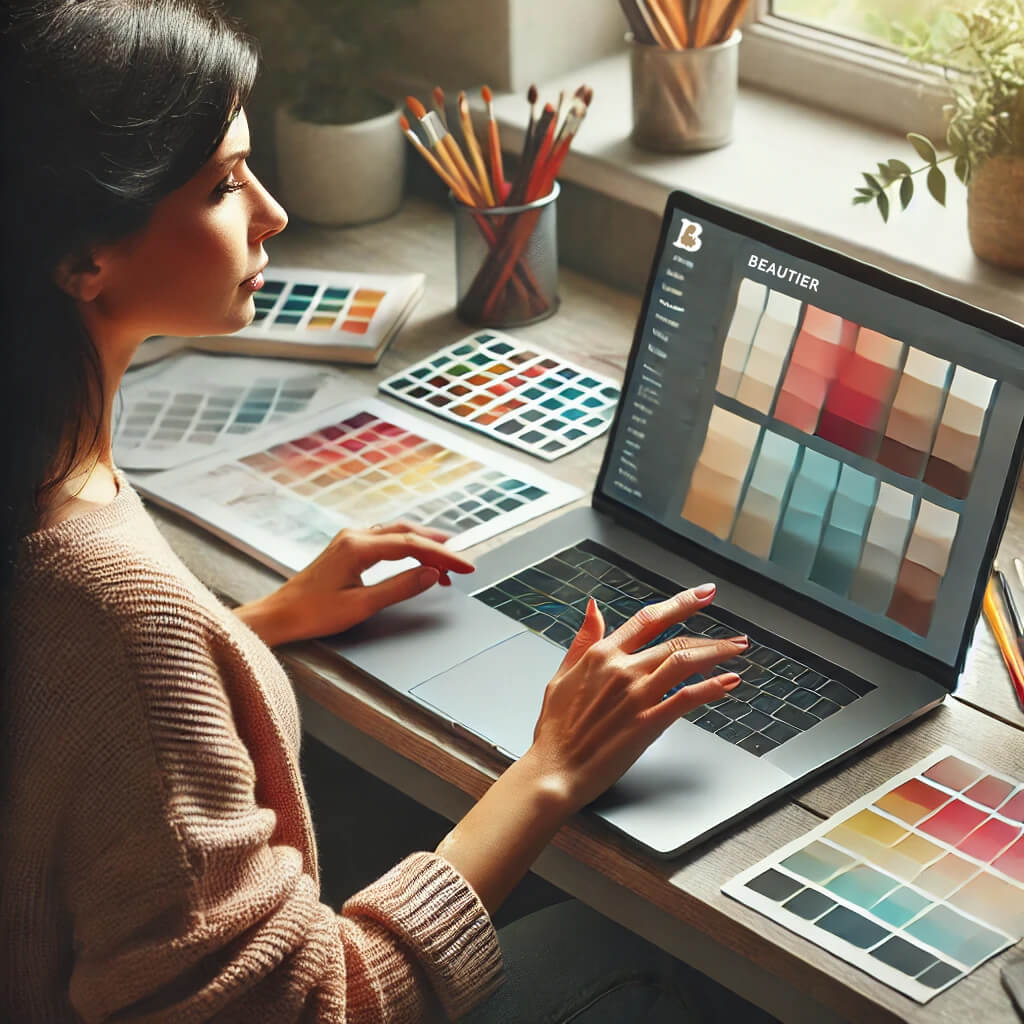The Art of Choosing Color Schemes and Color Trends for Women’s Beauty Websites

Colors That Are Always in Trend: From Neutrals to Bright Accents
Color trends change from season to season and depend on various factors, including global trends, cultural events, and the psychology of perception. However, some colors frequently recur in different fashion cycles.
Here are some popular color directions that regularly appear in fashion:
- Neutral Tones:
- Beige, Gray, Pastel: These colors are always relevant due to their versatility. They create minimalist and elegant looks that remain trendy regardless of the season. Neutral colors are easy to combine with other shades and convey a sense of cleanliness and order.
- Deep Rich Shades:
- Emerald, Deep Blue, Burgundy: These colors often appear in fall and winter collections. They give clothing or design a luxurious and elegant look. Such shades are usually associated with sophistication and style.
- Bright Accents:
- Yellow, Red, Orange: These colors appear in spring and summer collections, adding energy and vitality. Bright colors are perfect for creating expressive, dynamic looks and evoke associations with activity and positive emotions.
- Pastel Shades:
- Mint, Lavender, Soft Pink: Pastel shades have remained fashionable in recent years as they convey a sense of lightness and freshness. These colors are especially popular in spring collections and in design for a younger audience.
- Warm Earth Tones:
- Ochre, Terracotta, Sand: These shades have been actively used in recent seasons as they are associated with nature, ecology, and a sustainable lifestyle. They are popular in interiors and fashion, emphasizing a connection with the natural environment.
- Black:
- Black is an eternal classic that never goes out of fashion. It symbolizes elegance, restraint, and sophistication. Black is always relevant for formal events, business style, or creating minimalist looks.
- Metallic:
- Gold, Silver, Bronze: Metallic shades often appear in fashion trends, adding luxury and shine to the design. These colors are used to create accents, especially in evening and festive looks, and can be used as decorative elements in interiors.
Colors that remain trendy over time often reflect societal needs (e.g., sustainability and minimalism) as well as inner feelings, such as tranquility and comfort. Current fashion trends can be tracked through color reports released by companies like Pantone, which determine the “Color of the Year” each year.
Color Palette Highlighting Style and Elegance
For a website related to the beauty industry, it is important to choose colors that convey freshness, elegance, cleanliness, and trust.
Trending and attractive color schemes for such websites usually include:
- Pastel Shades (e.g., light pink, peach, light blue): These soft colors create an atmosphere of tenderness and luxury, often associated with beauty care and femininity.
- White: Symbolizes cleanliness, minimalism, and professionalism. White allows the content to “breathe” and emphasizes key elements.
- Gold and Rose Gold: These shades add a sense of luxury and exclusivity. They are often used for premium beauty brands.
- Nude Shades (beige, cream, powder): They convey a sense of naturalness and warmth, which is relevant for brands seeking to highlight natural and organic products.
- Light Gray or Silver: These colors emphasize elegance and modernity. They go well with pastel shades or can be used for a more restrained design.
- Dusty Pink: A more reserved and elegant shade of pink often used to create sophisticated and attractive websites.
- Mint and Lavender: These trendy and refreshing colors can be a great choice for beauty businesses, creating a sense of novelty and relaxation.
- Black and Dark Gray: These colors are often used for professional and luxury brands, especially if the website targets an audience looking for premium products.
For a beauty website, it is important to remember that colors should not only look beautiful but also harmonize with product and service images, create an emotional connection with the audience, and emphasize the uniqueness of the brand.
Color Palette for Beauty Websites: What Shades Attract a Female Audience
For a female audience of beauty websites, it is preferable to use colors that are associated with elegance, comfort, and relaxation.
Here are some popular options:
- Pastel Shades:
- Pink: Often associated with femininity, tenderness, and care. Shades ranging from pale pink to rose gold are particularly attractive for beauty and care.
- Lavender: A light shade of purple that conveys a sense of luxury and relaxation.
- Mint: A fresh shade associated with nature and cleanliness, evoking comfort and harmony.
- Neutral and Warm Tones:
- Beige and Cream: Emphasize a sense of luxury and naturalness, ideal for creating a background.
- Peach: A warm, soft shade that evokes warmth and comfort, often associated with youth and health.
- Soft Blues and Greens:
- Light Blue: Evokes associations with cleanliness, calmness, and trust, working well for skincare and spa-related websites.
- Soft Green: Shades of salad or pastel green are reminiscent of nature, health, and freshness.
- Accent Colors:
- Gold or Rose Gold: Add elegance and sophistication, highlighting the premium quality of products.
- Purple: Using purple accents (e.g., deep plum or amethyst) creates a sense of luxury and exclusivity.
- White and Gray:
- White: Associated with cleanliness and minimalism. A white background gives the site a sense of freshness and neatness.
- Light Gray: Can be used to add depth without disturbing the harmony of soft tones.
It is important to remember that colors should evoke positive emotions and correspond to the brand’s character. Use a combination of soft, warm, and harmonious shades to create a sense of comfort, beauty, and care, which particularly attracts a female audience.